| |
New BMS HCV NS5A Inhibitor: From Screen Hit to Clinic
|
| |
| |
Presented at the 15th International Symposium on Hepatitis C Virus & Related Viruses, Oct 5-9, 2008, San Antonio, Texas. At AASLD later this month initial results in patients will be presented.
Gao M1, Fridell R1, O'Boyle II D1, Qiu D1, Sun JH1, Lemm J1, Nower P1, Valera L1,
Voss S1, Liu M1, Belema M1, Nguyen V1, Romine JL1, Martin SW1, Serrano-Wu,
M2, St. Laurent D1,Snyder LB1, Colonno, RC2, Hamann LG2, Meanwell NA1
1Bristol-Myers Squibb Research and Development, Wallingford, CT,
2former Bristol-Myers Squibb employee
Hepatitis C virus (HCV) remains a global problem with approximately
170 million people infected worldwide. The virus-encoded nonstructural protein
5A (NS5A) is a multifunctional protein essential for HCV replication that has been
implicated in IFN resistance in vivo. Here we report the identification of a class of
potent and specific, small molecule inhibitors targeting the NS5A protein. BMS-
790052, is a first-in-class molecule evolved from a screening lead, and is the
most potent anti-HCV agent reported to date with an EC50 of 50 pM and 9 pM
against genotype 1a and 1b replicons, respectively. It is equally potent against
infectious HCV genotype 2a virus (JFH strain) and demonstrates broad genotype
coverage with EC50s ranging from pM to the low nM range for genotypes 2a, 3a,
4a and 5a. In addition, the potency of BMS-790052 is similar in Huh-7, HeLa and
HEK 293 cells, suggesting that the function(s) of NS5A inhibited by BMS-790052
are highly conserved in different cell environments. BMS-790052 is a specific
HCV inhibitor since it has been shown to be inactive against a panel of RNA and
DNA viruses. The specificity of BMS-790052 has been further demonstrated by
isolation and mapping of primary resistance mutations to NS5A. NS5A inhibitors
most likely act on the N-terminus of NS5A. Direct binding of NS5A inhibitors to
the protein in replicon cells has been examined with biotinylated compounds,
radio labeled compounds and a MALDI-TOF mass spectrometry method. In
HCV replicon assays, BMS-790052 exhibited an additive to synergistic effect
when combined with IFN-α, NS3 protease or NS5B polymerase inhibitors.
In proof-of-concept human trials, the in vitro potency of BMS-790052 translated
to in vivo efficacy. These results clearly demonstrate the potential of BMS-
790052 as a therapeutic for the treatment of HCV infection.
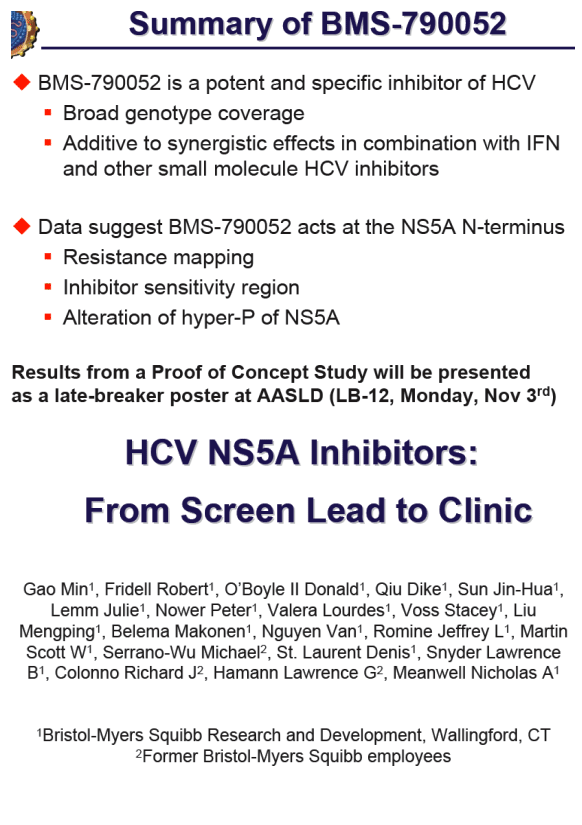
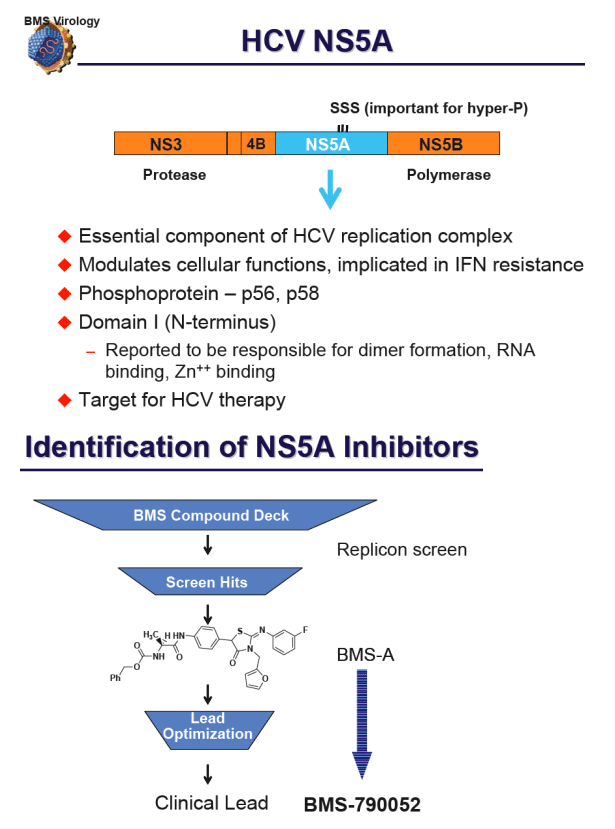
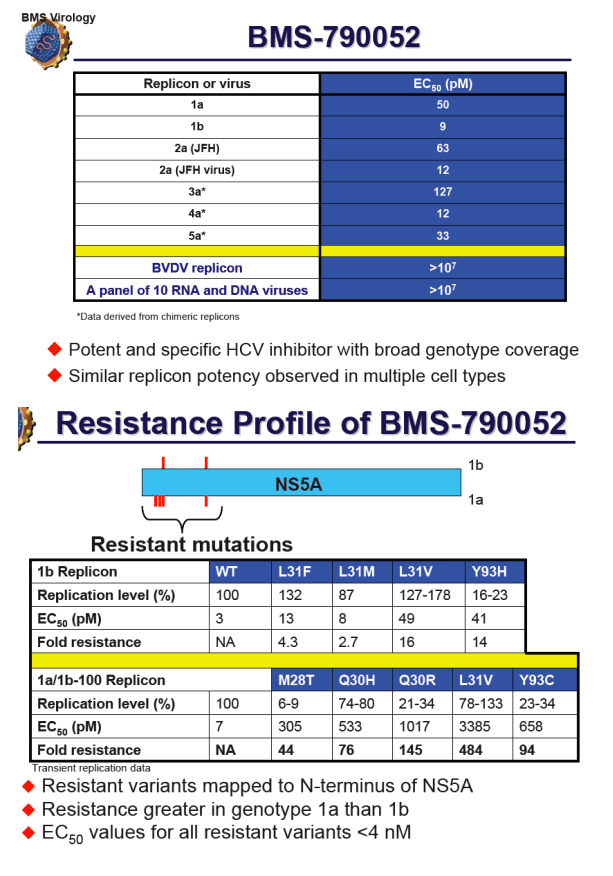
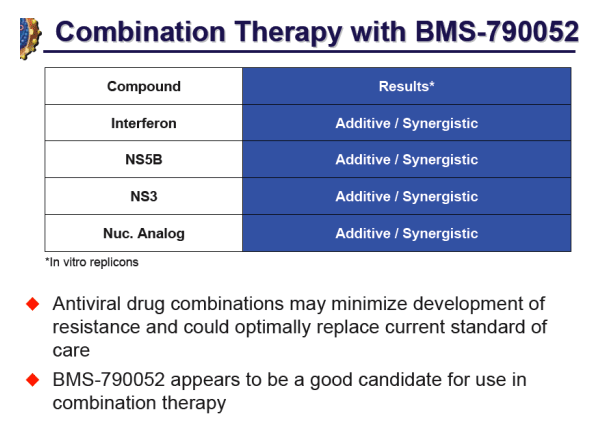
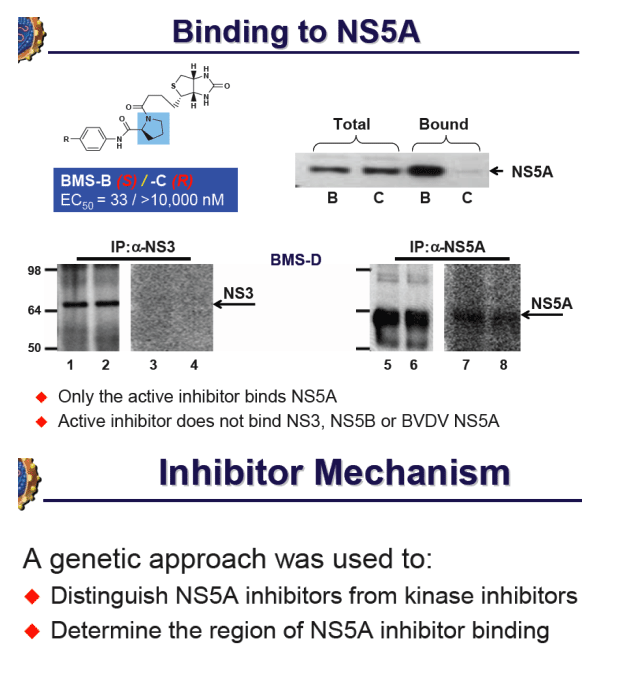
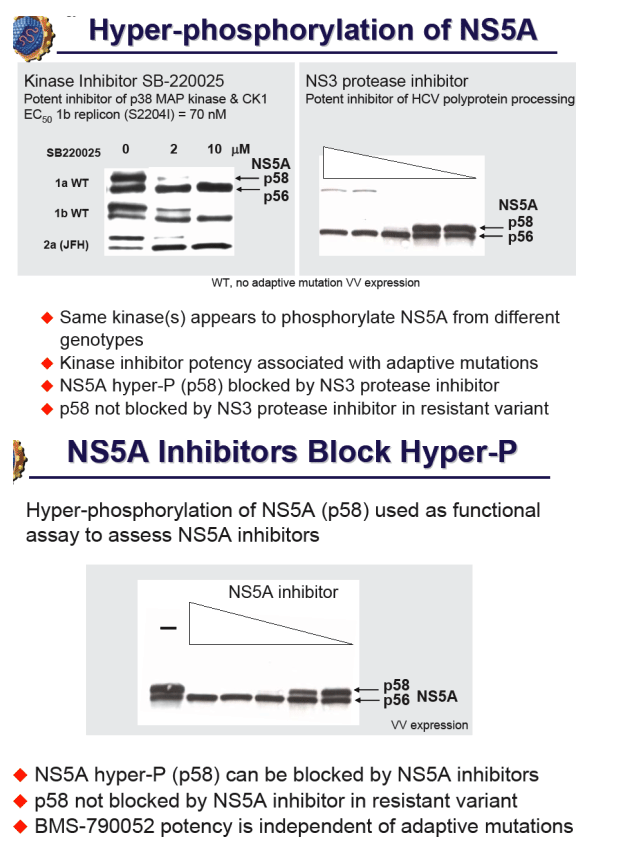
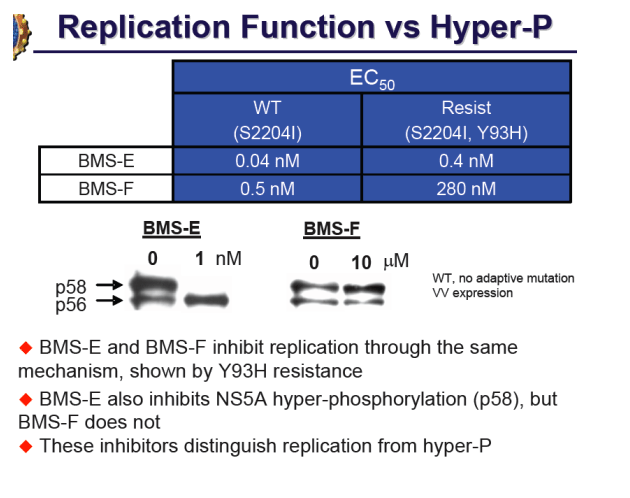
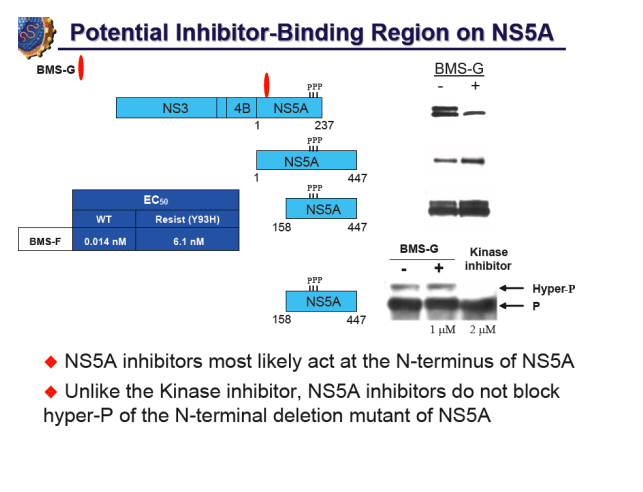
|
|
| |
| |
|
|
|